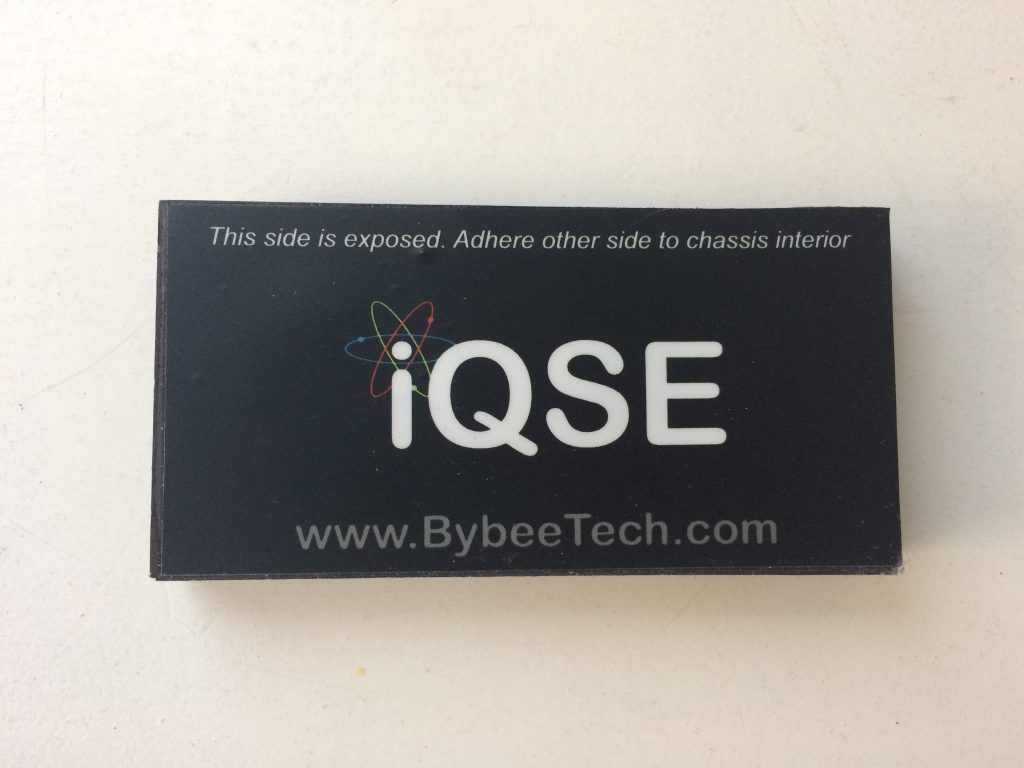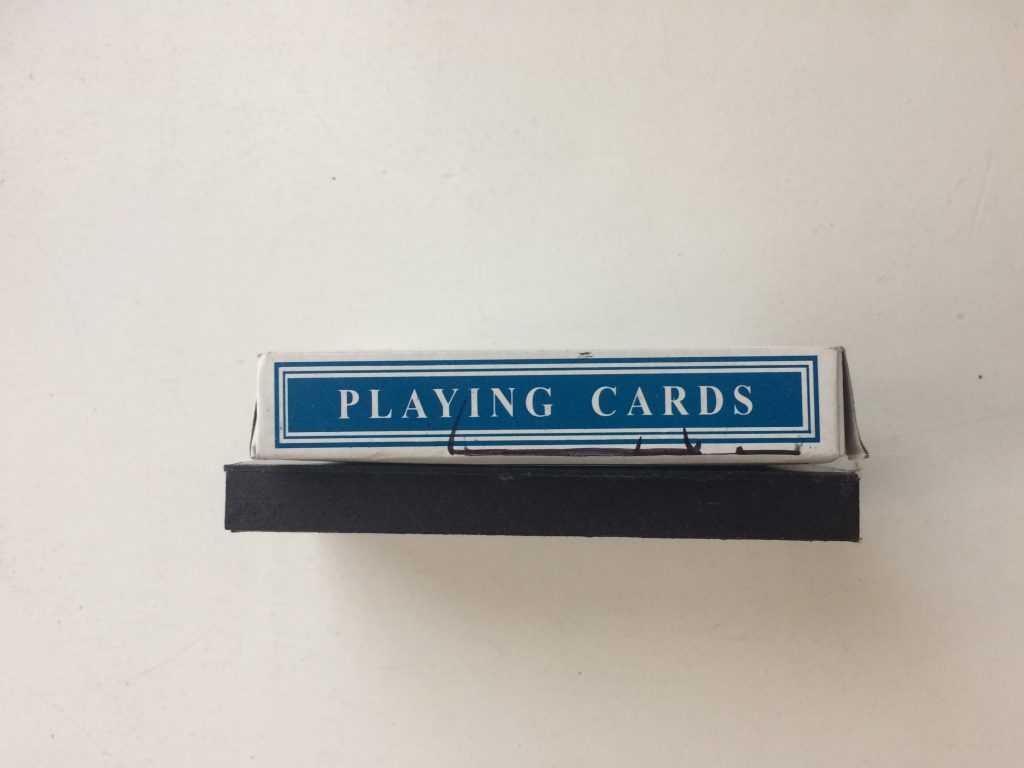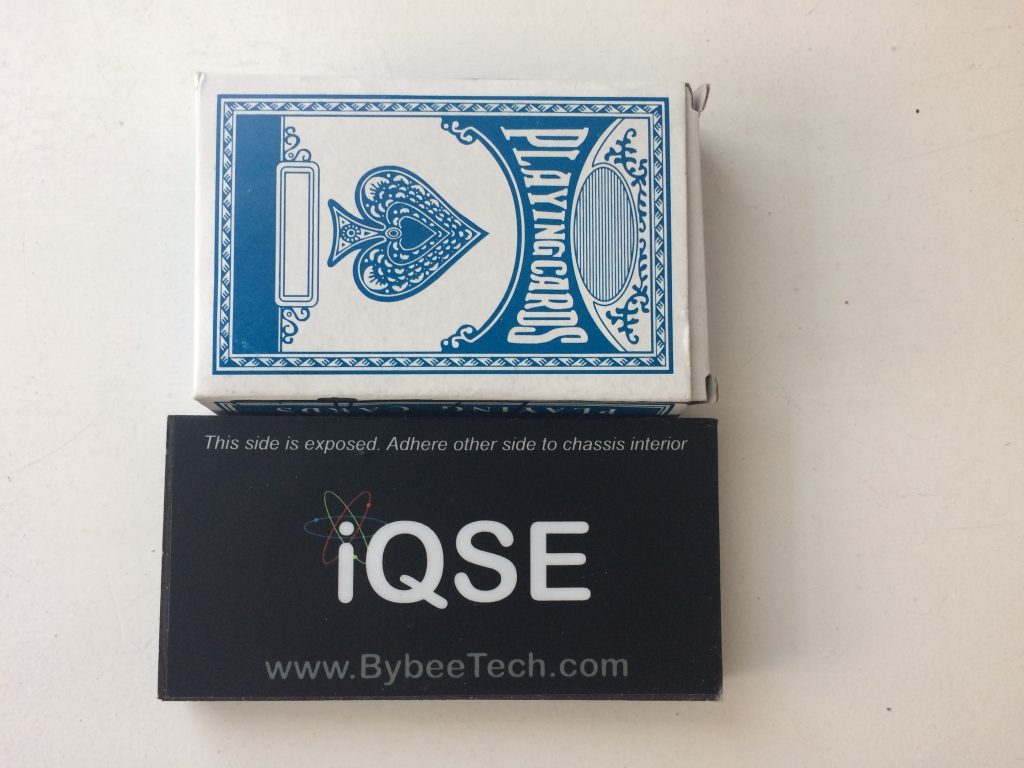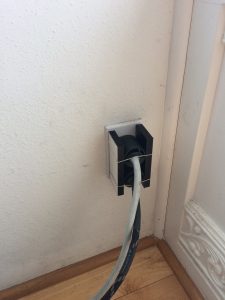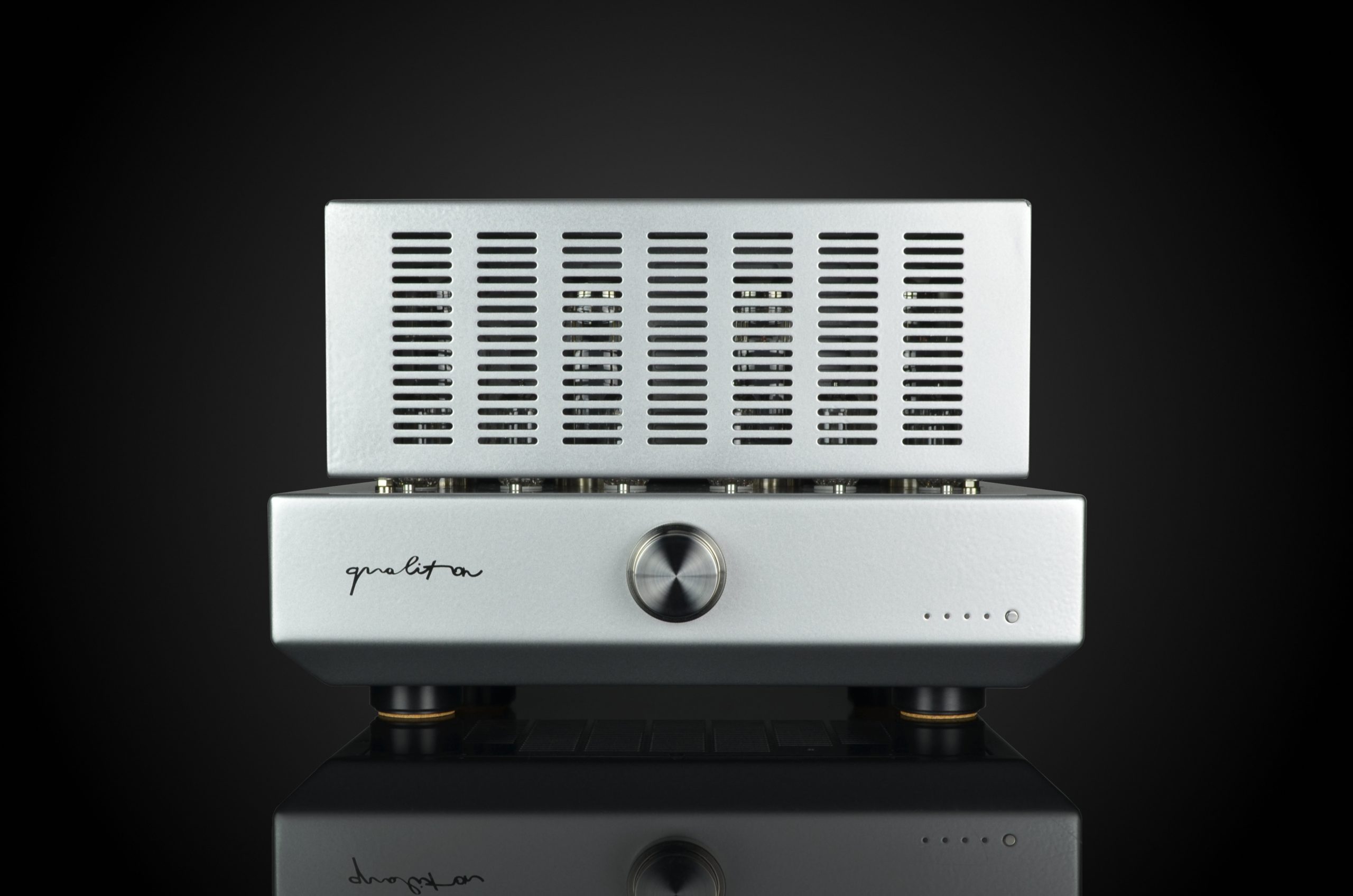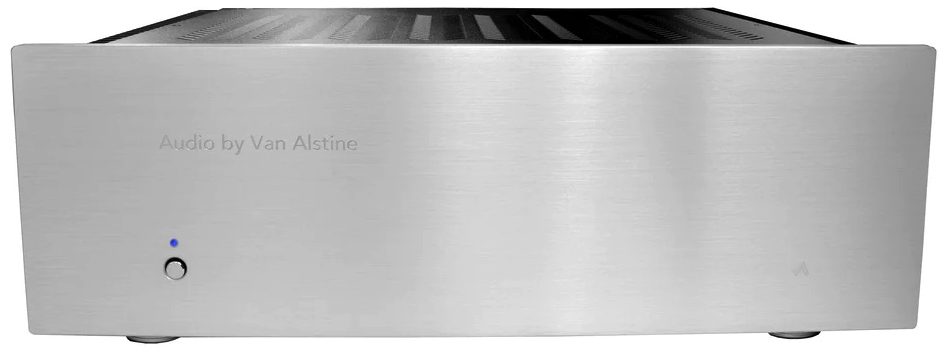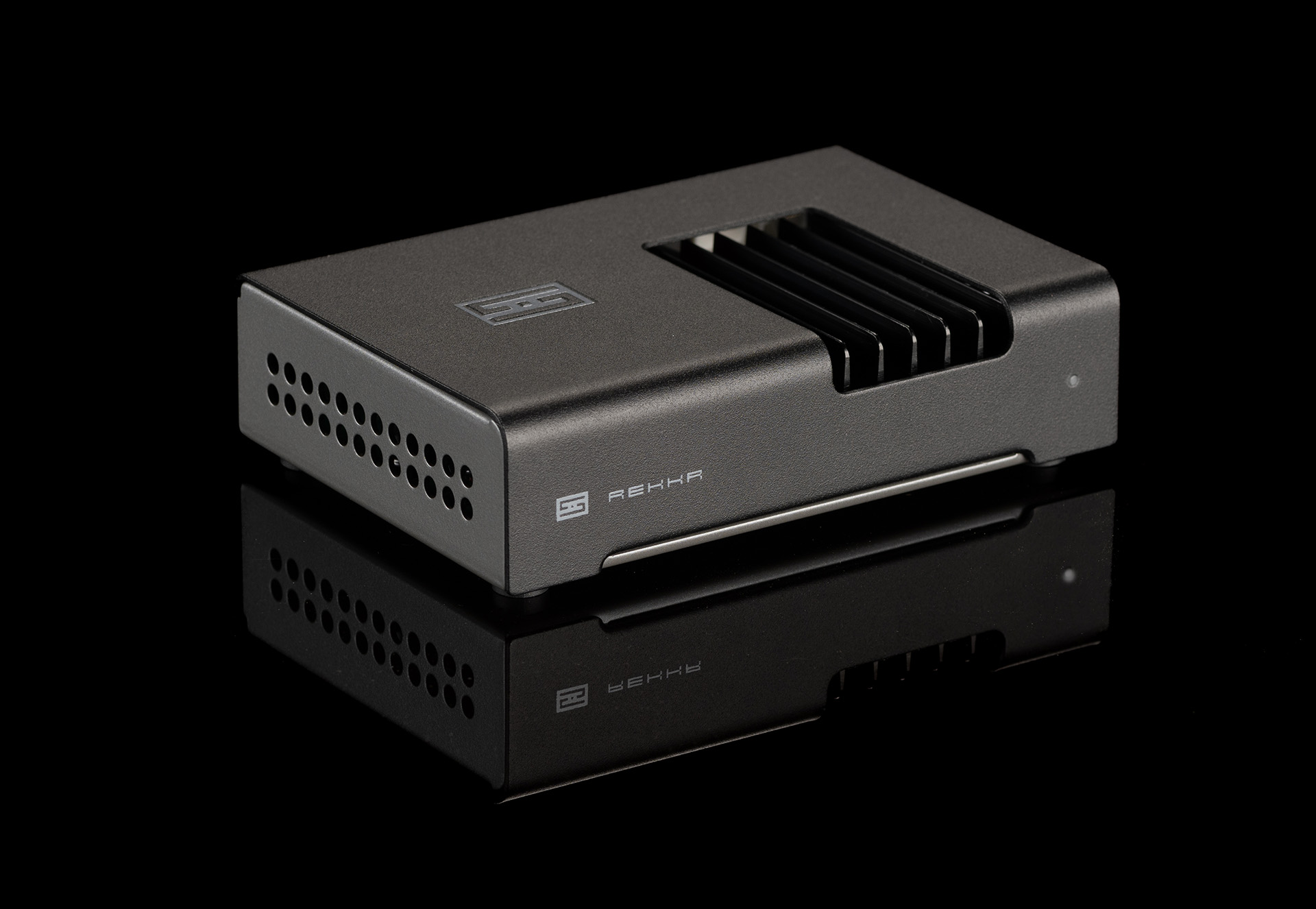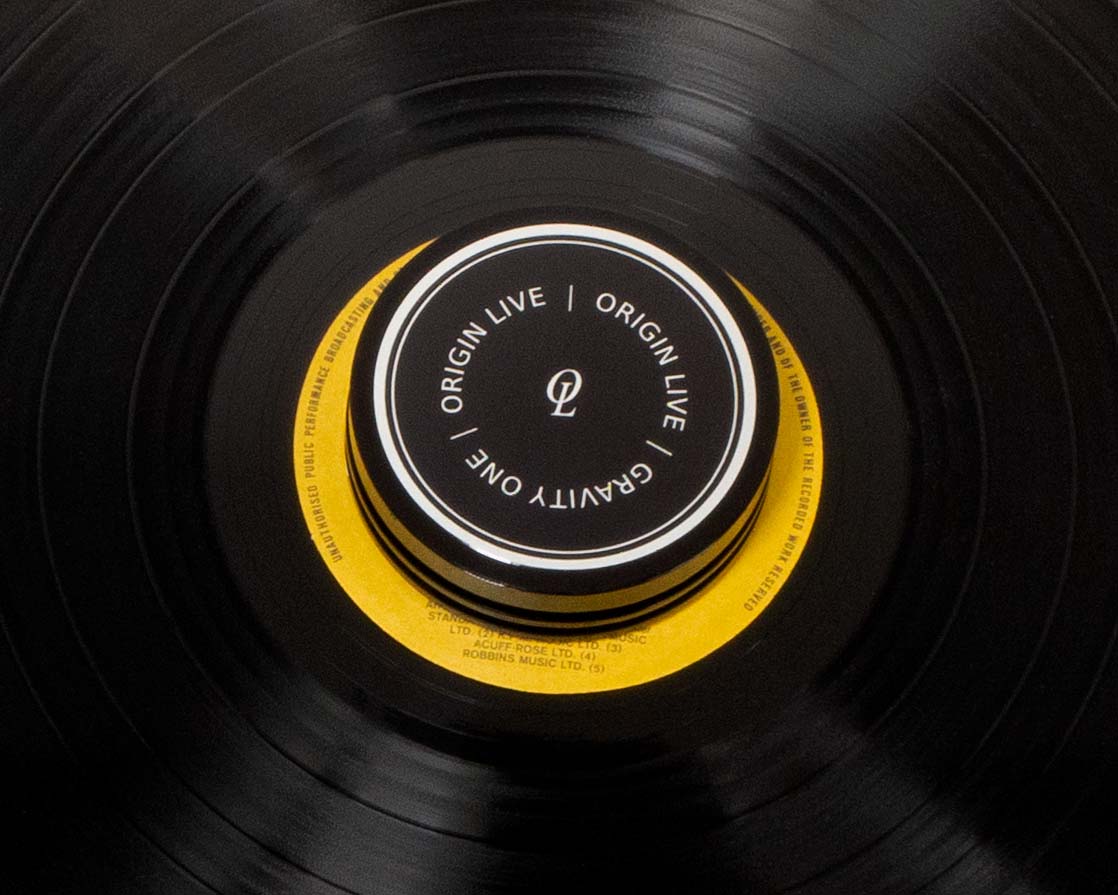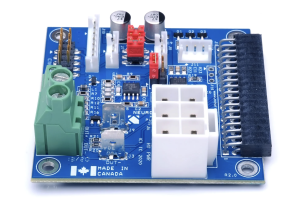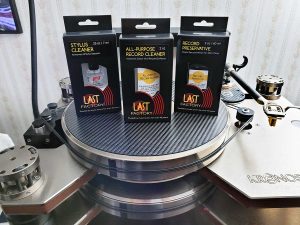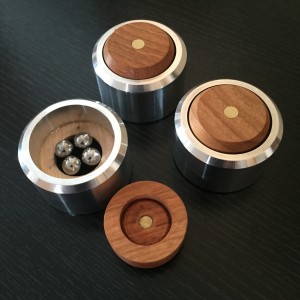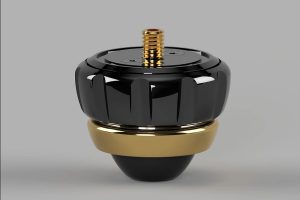Jack Bybee's iQSE or internal Quantum Signal Enhancer (iQSE) differs from the AC Purifiers I wrote about last month. As you'd expect the signal from your component runs through the AC Purifiers. It is with some bother I note no signal passes through the iQSE, it neither plugs into anything nor does anything plug into it. It is purely passive. Even more troublesome to me, unlike tube dampers or speaker footers its physical touch is essentially irrelevant to whether it makes a difference, though it does need to be inside the chassis of a component.
Jack Bybee's iQSE does not work on EMI or RFI but is designed to improve the flow of electrons and protons in circuit boards. So, if it's not in the circuit and works without need to touch the components... what's up? Jack Bybee says the iQSE causes electrons and protons moving through electrical circuits to align such that a "slipstream" effect is created for those protons and neutrons.
I would expect such claims might raise the flag of doubt causing many to dismiss the "technology" as imagination and good copy.
From bybeetech.com:
"Bybee Technologies has developed a product that is energized by a surrounding energy field. Once energized, our product resonates at the same frequency as the C13 atom. (Versus the more common carbon 12 atom - emphasis added) Consequently, this creates a magnetic field of force effect. In this magnetic field, the polarity of all electrons and protons are altered, affecting their oscillation by making them more aligned with each other. This reaction creates an affect that makes the transfer or sharing of electrons between atoms more streamline and efficient; and air molecules less resistant."
My limited background in physics doesn't qualify me to scrutinize those claims. Jack did, however, point me to the underlying technology he's tapped for the iQSE. It's called Spintronics. Rather than launch into an inaccurate description of Spintronics, let me suggest interested or doubting readers search the interweb with the terms "Spintronics Made Easy," for an interview with David Awschalom, now at the University of Chicago. Researchers at IBM are also investigating the use of Spintronics for some next generation (or is it five generations away?) hard drive technology.
As far as I can tell, Spintronics' most likely application relates to computer hard drives. Allow me to digress for a moment on Spintronics. Please further excuse the following likely inaccurate description as I have a weak understanding of Spintronics that is compounded by an attempt at concision.
Current hard drive designs work by assigning an on/off (or one / zero) placeholder to register data. Each place holder requires at least one atom to register an "on/off" or 1 or 0 on a hard drive. Thus, there is a hard limit imposed on how much information can be stored on a given drive size. With Spintronics, researchers have discovered that not only can they control the polarity of atoms, i.e. on / off, they can also control the spin of electrons and protons. This leads to the possibility, if not yet realized, to store information inside the atom. Inside the *(&(*& Atom! What? Yes.
Even more amazing, several years ago an IBM researcher indicated that there was the possibility of storing an essentially unlimited (infinite?) amount of information within eight to ten atoms with Spintronics! Unfortunately, I can no longer find that link to share. Whether Spintronics has been applied to create a working prototype hard drive, forget a commercially available product, I don't know. So, with that digression I return to what seems like an improbable product.
The "internal Quantum Signal Enhancer" at 4" x 2" x 1/4" (HWD) is about the size of a deck of cards. Thus, an iQSE should be able to slip into nearly any component.
Proper application requires that the appropriate (and labeled) side is placed facing open space, or at least not placed facing the chassis. The iQSE does not work on EMI or RFI so placement right next to a transformer yielded no discernible affect.
At the moment, I have four iQSE devices in my system. I'd like to have a few more, oops, I'm letting the cat out of the bag. Let me shove the cat back in and note, your first question might be, do you need to have that many? No. One works very well and is an easily noticed and welcome addition. More devices simply amplifies the impact incrementally, though each addition is also easily noticed.
My immediate note on firing up my system with just the one iQSE in my DAC was "No f'ing way!" Well, actually that was my friend John's response. Mine was akin to the surprise that comes with a punch in the nose—as in "Huh? What was that?" I heard a significantly different presentation. I thought I heard a smoother presentation overall with excellent high hat detail, with a warmer, more supple midrange and a fuller bottom end. My initial notes concluded with "or so I imagine" as I was confounded on many levels. With regard to understanding how these things work... I remain confounded. Though the sonic difference is evident, I still have trouble believing something not in circuit could make such a difference.
With a few more songs coursing through my system, the effect was clearer but not easy to describe at the outset. Often tweaks or swapping in a new component changes the tonal balance, extends the frequency response or some other such change to the sound. The iQSE's impact was mostly not like that. Tone and timbre were essentially unchanged but markedly different. It's not like I switched from a tinny solid state preamplifer to a lush tube preamplifier. What the iQSE wrought was a dramatic drop in the background noise that let me hear that my system had been transparent and bright sounding.
With a slightly darker presentation initially, I thought I'd lost some detail because of the change in the quality of male vocals—on Frank Sinatra's Songs for Swingin' Lovers "You Make Me Feel Young Again" had a richer timbre. His voice got a bit deeper, but was definitely warmer and more resonant. The sound was more realistic (with a transparency) but not a highlighted one. Was this "less bright" balance a change in damping in the midrange? I set out to find out.
A little further up in the midrange with Storm Large's vocals on Pink Martini's rendition of "Pana Cand Nu Te Iubeam," lost a bit of the beaming quality in the middle of her register, though that quality did not disappear entirely—perhaps the beaming was from the microphone rather than the recording? Again, was this damping the midrange to hide "errors" or distortions in sound?
Moving a little further up the midrange the "spittier" part of brass instruments in "You Make Me Feel Young Again" were not suppressed or damped at all. Rather, the spittiness arose from a quieter, darker background so that even though "less emphasized" they were also easier to distinguish. My concerns started to fade.
On "Pana Cand Nu Te Iubeam" a close mic of a triangle with the iQSE "in circuit" resonated like it does in person, like I've never heard in a recording before. Nearly always, triangle recordings showcase the overtones but miss the fundamental which can resonate in a rather unpleasant way, sort of like holding a tuning fork right next to your ear—it's "natural" but really irritating. In person and up close to a struck triangle I experience that fundamental as a disturbing, unnerving and frankly an irritating experience. Rarely, if ever before, through any system, have I heard a triangle's resonance occur as a tuning fork does, though they are essentially very similar experiences.
On other, miscellaneous tracks, and lower in register than the mid to upper midrange, I noticed that kick drums didn't thump, so much as bass was more of a pohhhhhmmmhmp sound, i.e. more like a puff of air when a kick drum really moves some air. Easily heard and experienced live, not so often reproduced by a stereo. Not only was the physical rather than sonic experience of just air moving easily conveyed, but the iQSE seemed to open new pastures for differentiating bass pitch. Jessica Williams' piano on "Esperanza" from The Art of the Piano had an uncanny reproduction of the "vibratro" or resonance that is audible live, but is infrequently so audibly conveyed through a stereo.
I found one iQSE wrought essentially the same experiences when moved to my YBA preamplifier. As with the iQSE in my LampizatOr Euforia, in the YBA micro details of piano were easier to discern.
Bybee claims that the device will also improve video, and well it may, but my apparently insensitive eyes did not notice a difference with the iQSE in my Oppo BD-105. It should be said I am not particularly sensitive to visual things. Sonically the Oppo is a less resolving device than my YBA or LampizatOr, so maybe that's part of it. Or maybe, unaware of best placement, I could have placed it more appropriately. The last place I placed the iQSE was in the power strip I wrote about last month, the one with the Bybee AC Purifiers on the neutral and hot terminals. At the time I had not thought to insert the iQSE into a product already "Bybee'd" for the same reason... chocolate syrup on chocolate cake seems... redundant? But that was before I knew the iQSE and the AC Quantum Purifiers work differently. Placed in the power strip, I was stunned. For example, I could hear Jessica Williams' piano as more obviously a percussive instrument with vibrating elements, e.g. the hammered strings and the vibrating sound board. Further, I needed to turn down the volume on my subwoofer amplifier from a 2:30 position to closer to 12:30. This placement of the iQSE was more impactful than the other two locations.
So, those are my results with one Bybee iQSE in my system. My conclusion is that I lost no detail with the iQSE. In fact, there was probably more detail but of the nuanced variety I've described, leading to a more natural presentation.
Jack generously sent me two more and a week later a fourth. With the first two extras, I opened up my powered ATC speakers—which have amplifiers and circuit boards inside—and Wow! What I noticed, again, is that timbre and tone from my speakers really didn't change so much as the noise or "halo" around music lowered and the presentation became richer, more relaxed and better differentiated. With the second and third iQSEs in place the change was like looking through a window without the sun shining in my eyes. I'm not looking at new scenery, I'm just seeing it better with greater color saturation and tonal differentiation.
A few days later, I inserted the fourth iQSE into my DAC. I did this without telling my wife. I forget what I was playing, but in the middle of a song, uncharacteristically, she dropped her self-imposed German hausfrau chores and sat herself down and exclaimed "Wow, the system really sounds good tonight, it sounds more analog (no vinyl playing) and beautiful."
I'm not sure I'd say placing the last iQSE made my system more "beautiful" but it was definitely better and better across the board, tonally, in timbre and frequency response. With either one or many Bybee iQSE's in place it seems that tone and timbre are unchanged and yet there is improvement to both. Tone is easier to pick out and the instrument(s) being played (timbre) are easier to distinguish, even in a mass of similar instruments, e.g. viola with violins. It seems the iQSE effectively drops the noise floor, removing a low level hash that seemed to suffuse instruments rather than as a separate sound. With the last iQSE inserted, I turned my subwoofer amplifier down, yet again, to about 11:30 because the bass was now too much. I'm not saying that the iQSE emphasized bass, but that the previously "unquieted noise" was obscuring bass detail.
While I've spent a good amount of time talking about bass response, the effect of the iQSE seems quite broad band, from deep bass, where the bass opens up pastures of depth, but also space, creating room for more and more differentiation of low notes. Whereas midrange vocals and instruments, pre-iQSE, there was a hash that led to a "pastel" sound that was sonically like colored pencils, compared to a post-iQSEs system where, tone and timbre saturation yielded deeper and richer colors, more akin to an oil painting.
It is unfair, I think to call the iQSE a tweak because it so profoundly impacts performance to such an exceptional extent. And, yet, it is a tweak. Maybe you don't need a new component, but you should see what an iQSE will bring out in your existing gear. One iQSE made a significant difference in my system. The sound was more relaxed, tone was "righted" without changing and timbre was more easily distinguished. Add another or several more iQSEs and it seems to deepen the differences wrought by just one.
My system was revitalized in a way I had no idea it wanted. With more iQSE's in my system my wife found our system beautiful and I found it significantly more engaging with no downside. While four was the bee's knees for me, and two or three more might be even more interesting - you should know one iQSE should make a significant difference in your system. I believe the iQSEs will deliver a more realistic rendering of music (tone and timbre) from your existing stereo, without, ironically changing either. At $150 each, it's great bang for your buck/pound/euro!
iQSE
Retail: $150
Bybee
Images by Larry Cox
P.S. (May 13, 2017) At youtube.com, search for "IBM Spintronics Lab" for May 28, 2013 for comments on the hard drive storage.
P.P.S. (May 13, 2017) I took two iQSEs and, with two rubber bands, "affixed" them on either side of the two male IEC plugs that go into my AC socket. Wow, better sound, again. Better, frankly than placed outside my speakers, but next to the power cord and interconnect that plug into the back of my speakers, which also made a difference for the better. It is starting to seem like a consistent thread is developing, for the greatest effectiveness, place iQSEs near or around power junctions, e.g. the male IECs plugging into the AC socket here, as well as inside my power strip - places where power is distributed to more than one component. Jack Bybee informed me that a customer tried two iQSEs inside his fuse box. I have not tried that and have some concern about my own ability to do that safely, so it may be awhile, if ever, that I try that. I am, however, interested to hear what any readers may have to share.
May 25, 2017. Allan Auyeung, here's the best placement I've found so far, one iQSE on each side of the male IECs plugged into an AC socket. Note the white surface showing in the picture is the side that should be affixed to the interior of the chassis and the "black side" with the Bybee logo, etc. on the inside facing the IECs. I've also been told that placing these in fuse boxes are the most impactful, but if you (like me) are uncertain how to do that, you should have an informed and knowledgeable person do that for you.
Lawrence13 : I'm awash in the magic of your recorded encounter. In some ways, it appears we have had a similar experience. If you need some grounding in physics instead of fairy dust, I invite you to listen to "Spintronics Made Easy" on youtube. When I treated each sentence from David Awschalom in that video like a separate gem to be examined before continuing to the next sentence I understood more and more until . . . I realized I needed a lot more background to advance my understanding. I surrender to a level of ignorance and an experience of magic in my system. Spintronics is real and apparently well deployed by Jack Bybee. I am delighted that you have had a positive experience with the iQSE.




